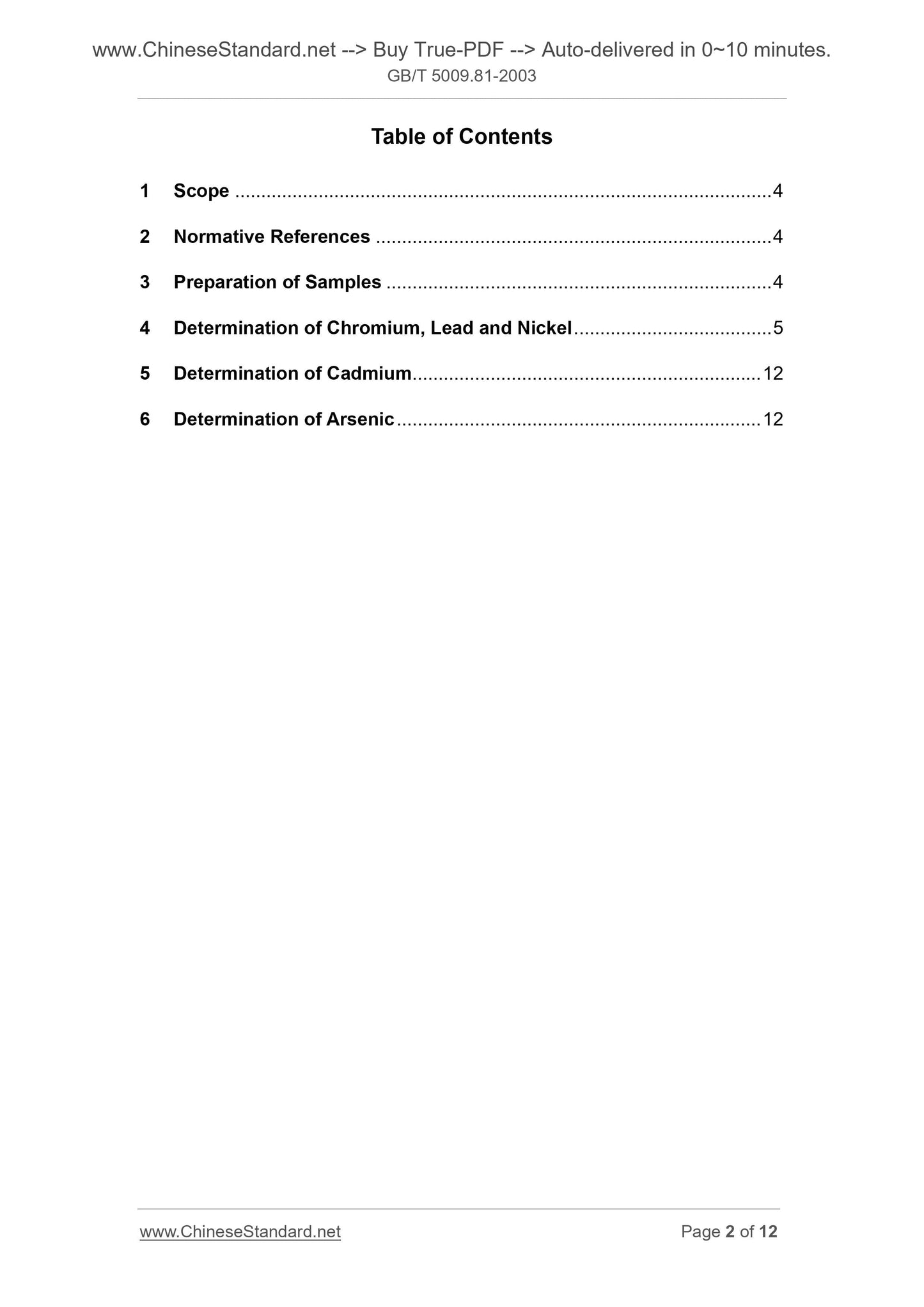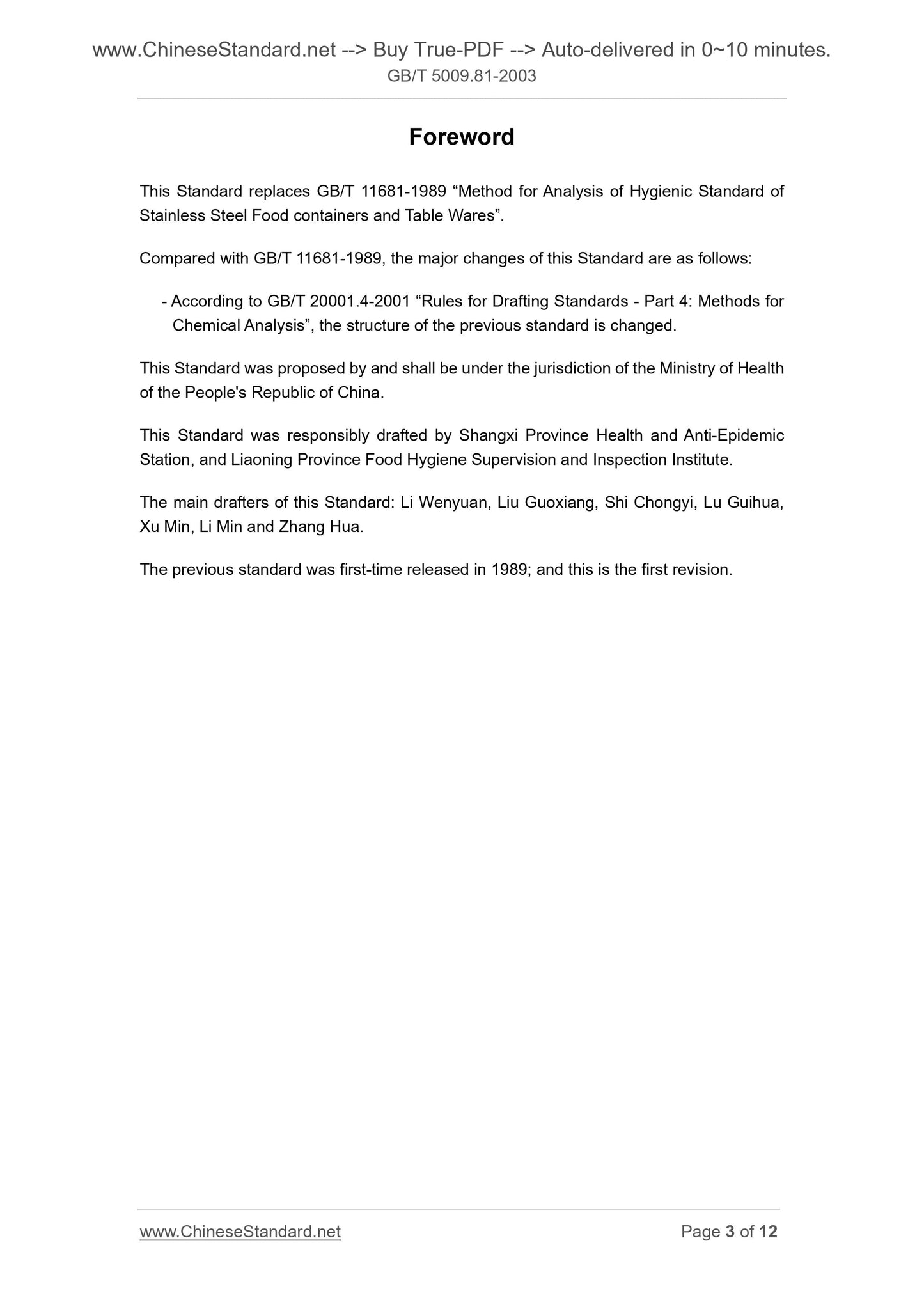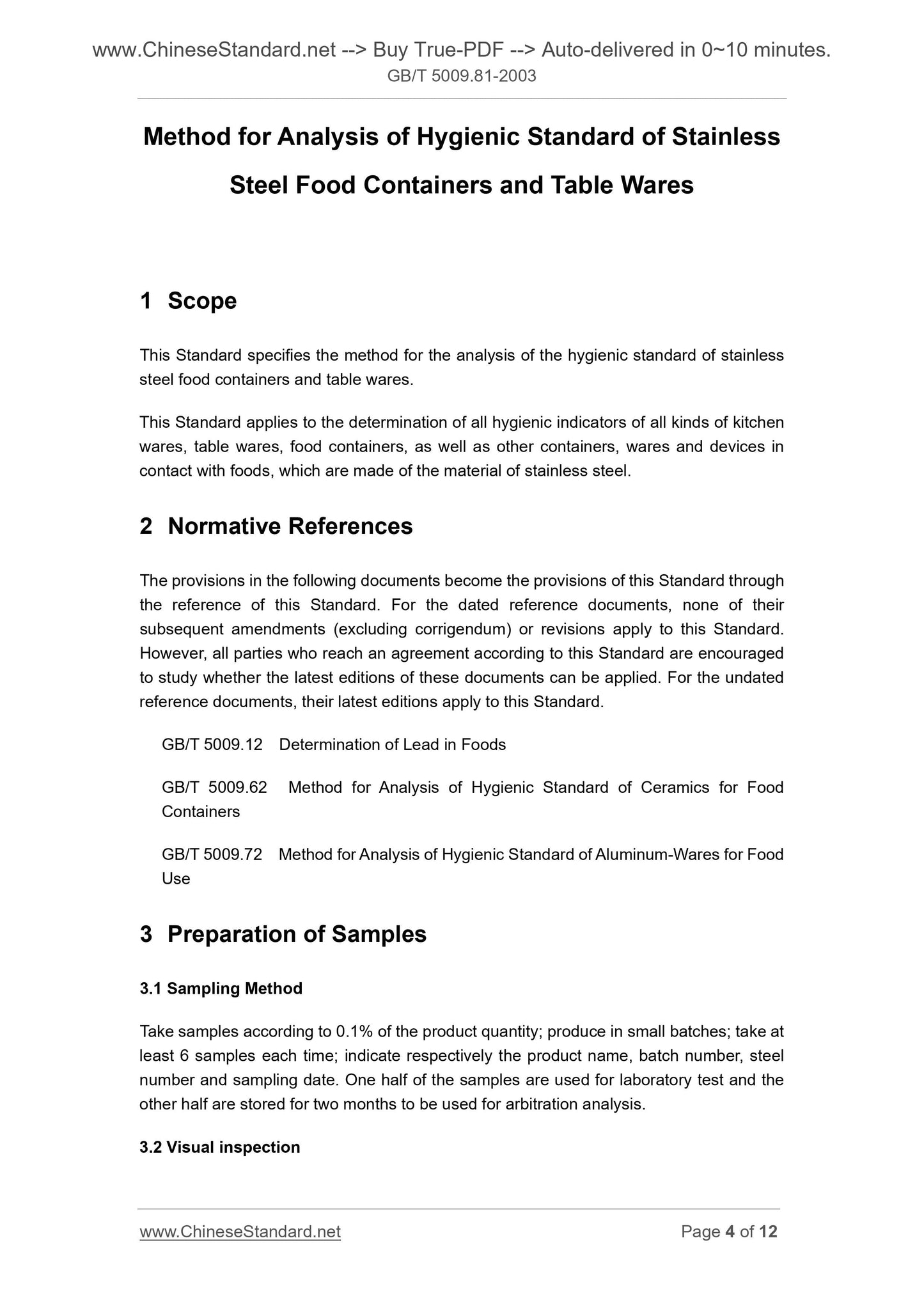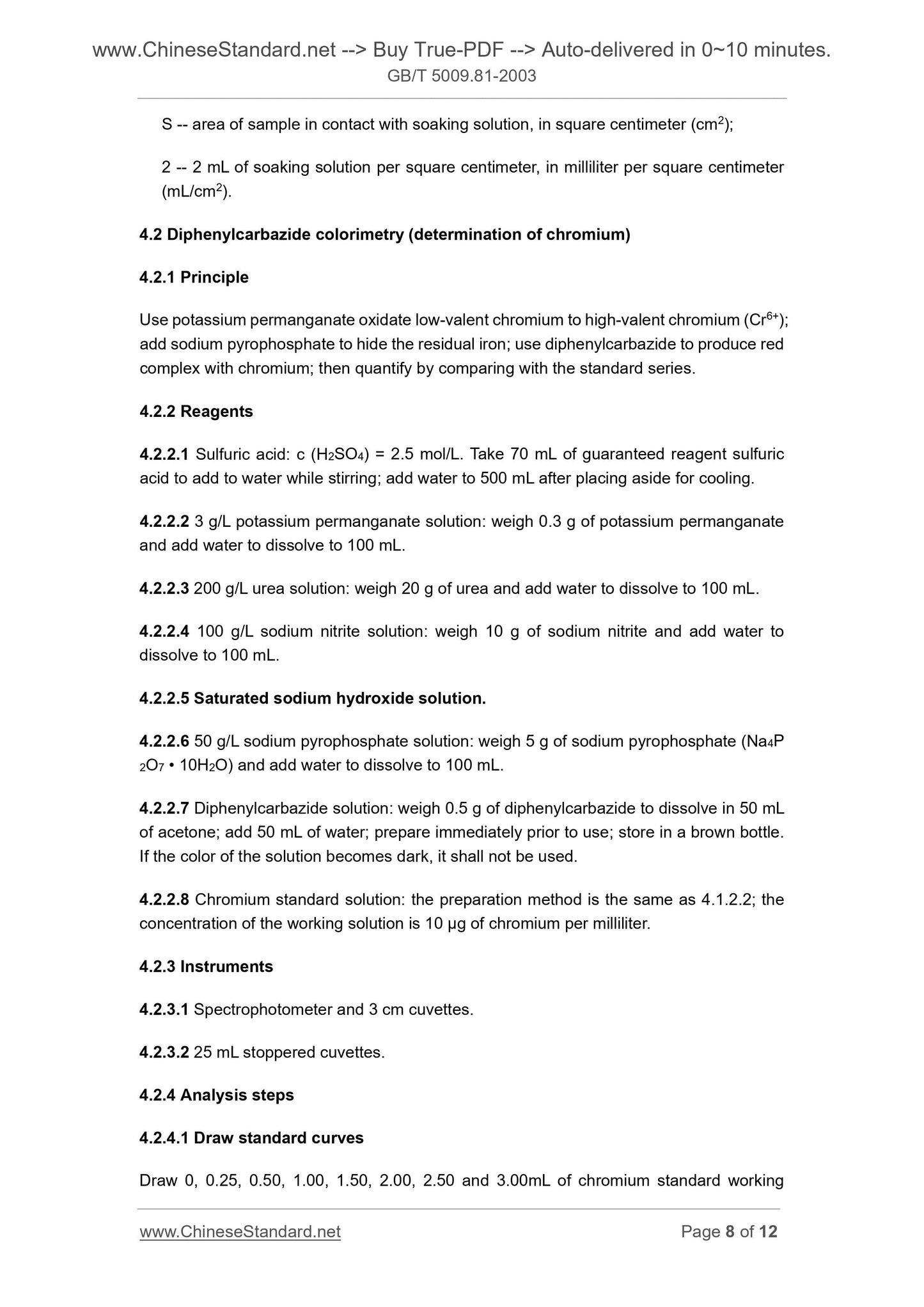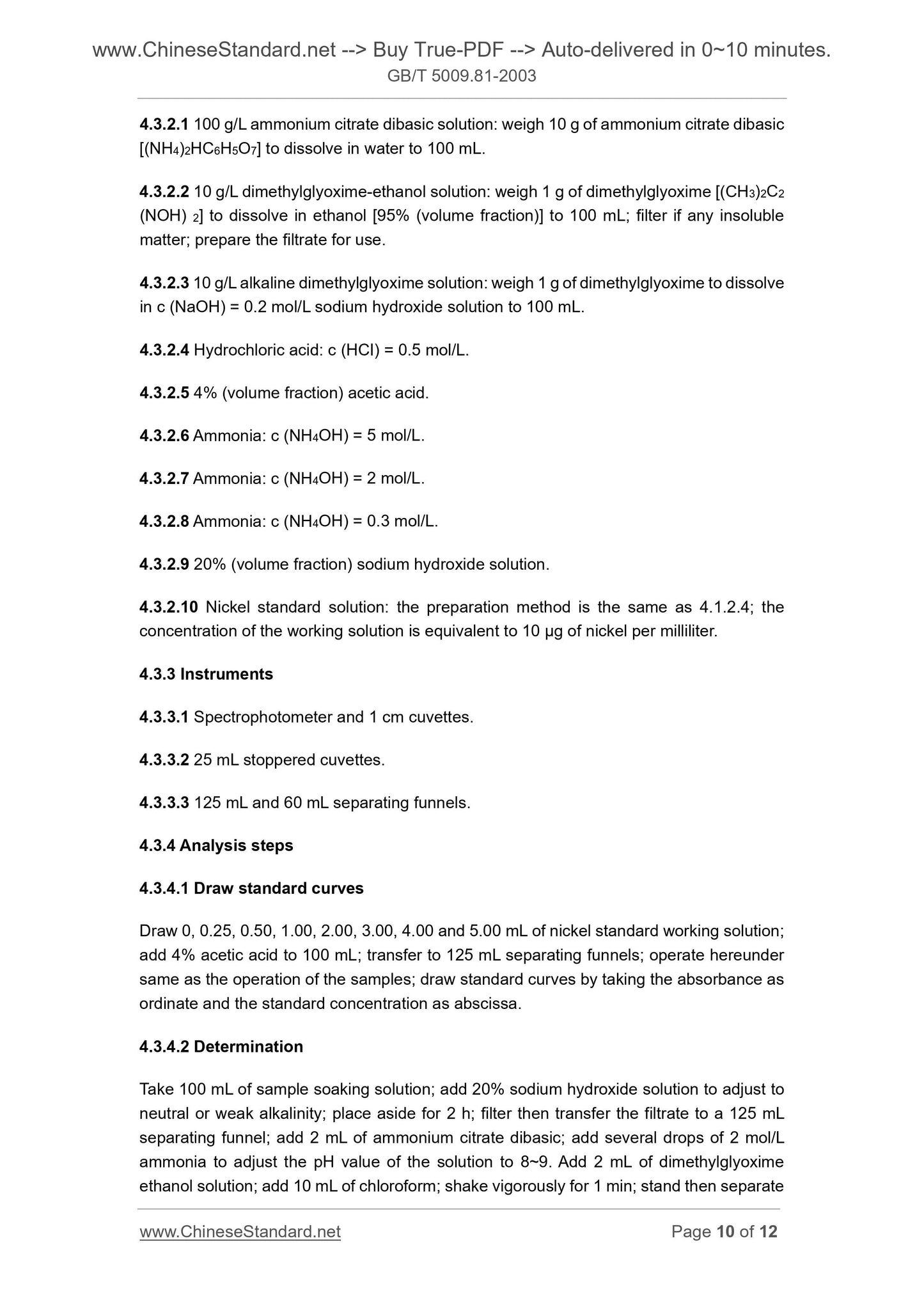1
/
of
7
www.ChineseStandard.us -- Field Test Asia Pte. Ltd.
GB/T 5009.81-2003 English PDF (GB/T5009.81-2003)
GB/T 5009.81-2003 English PDF (GB/T5009.81-2003)
Regular price
$70.00
Regular price
Sale price
$70.00
Unit price
/
per
Shipping calculated at checkout.
Couldn't load pickup availability
GB/T 5009.81-2003: Method for Analysis of Hygienic Standard of Stainless Steel Food Containers and Table Wares
Delivery: 9 seconds. Download (and Email) true-PDF + Invoice.Get Quotation: Click GB/T 5009.81-2003 (Self-service in 1-minute)
Newer / historical versions: GB/T 5009.81-2003
Preview True-PDF
Scope
This Standard specifies the method for the analysis of the hygienic standard of stainlesssteel food containers and table wares.
This Standard applies to the determination of all hygienic indicators of all kinds of kitchen
wares, table wares, food containers, as well as other containers, wares and devices in
contact with foods, which are made of the material of stainless steel.
Basic Data
| Standard ID | GB/T 5009.81-2003 (GB/T5009.81-2003) |
| Description (Translated English) | Method for analysis of hygienic standard of stainless steel food containers and table wares |
| Sector / Industry | National Standard (Recommended) |
| Classification of Chinese Standard | C53 |
| Classification of International Standard | 67.080 |
| Word Count Estimation | 7,786 |
| Date of Issue | 2003-08-11 |
| Date of Implementation | 2004-01-01 |
| Older Standard (superseded by this standard) | GB/T 11681-1989 |
| Quoted Standard | GB/T 5009.12; GB/T 5009.62; GB/T 5009.72 |
| Issuing agency(ies) | The People Republic of China Ministry of Health, China National Standardization Management Committee |
| Summary | This standard specifies: stainless steel food containers hygiene standards analytical methods, This standard applies to: stainless steel as raw material a variety of drinkware, dinnerware, utensils and other food contact containers, tools, equipment, and other health index measuring. |
Share

